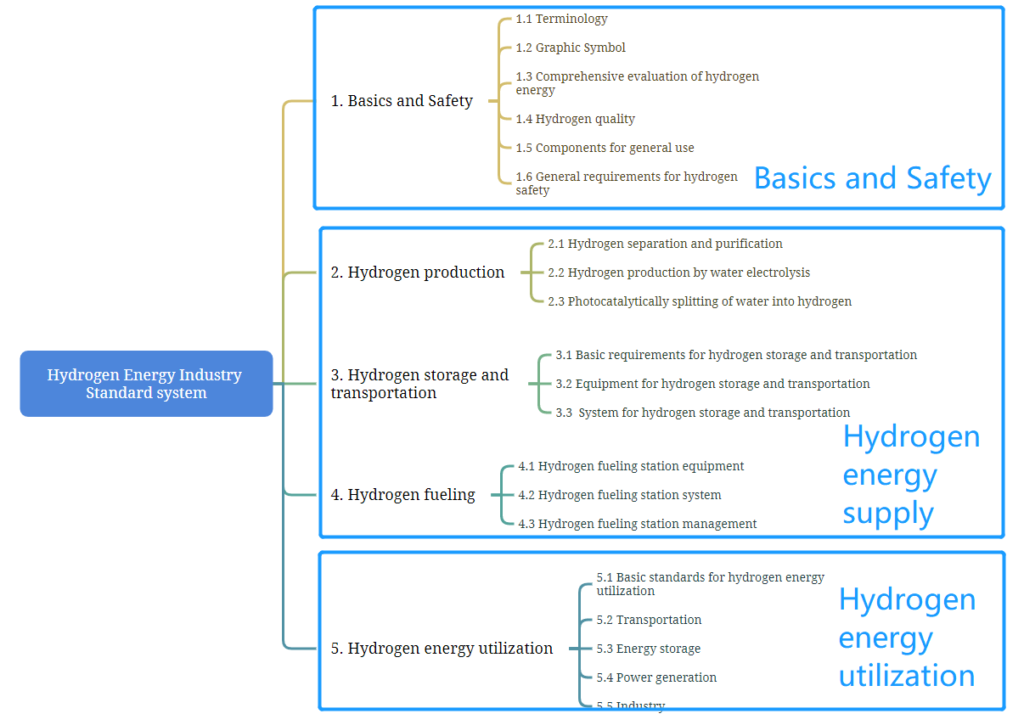



On July 19, 2023, the Standardization Administration of China, in partnership with five other ministerial departments, collectively unveiled the "Guidelines for Establishing the Standard System for the Hydrogen Energy Industry," hereafter referred to as the "Guidelines."

This comprehensive document comprises six distinct sections: general requirements, rationale for the standard system, the standard system itself, key objectives, implementation provisions, and a catalog of hydrogen-related standards. As per these Guidelines, the standard system is visually represented as a tiered tree structure, progressing from fundamental principles and safety considerations to matters concerning hydrogen energy production, supply, and utilization (see Figure 1). This organization underscores China's commitment to both satisfying market demands and nurturing the growth of the hydrogen industry. Notably, the foremost key objective outlined in the Guidelines pertains to the expeditious completion of imperative standardization initiatives. These encompass critical areas like testing methods for assessing hydrogen fuel quality, methodologies for evaluating the water electrolysis systems employed in hydrogen production, and overarching requirements for hydrogen refueling stations, among others.
Essentially, the Guidelines serve as a comprehensive three-year action plan, with the overarching objective of developing over 30 national and sector-specific standards by 2025. These standards will play a pivotal role in facilitating various aspects of hydrogen production, storage, transportation, and utilization. Emphasis is placed on the standardization of hydrogen quality testing, safety measures, renewable hydrogen production through water electrolysis, high-pressure hydrogen storage vessels, on-board hydrogen storage containers, equipment for hydrogen liquefaction, liquid hydrogen transport vessels, hydrogen energy pipelines, hydrogen refueling stations, fueling agreements, fuel cells, and fuel cell vehicles.
Throughout this standardization journey, the Guidelines actively promote standard development, particularly through association standards, and encourage active involvement in international standardization endeavors and exchanges. Key points include:
· According to the Guidelines, a total of 158 standards (both national and sector-specific) and standardization projects have been identified. Among these, 19 represent standard projects that have not yet commenced development, with approximately half of them related to hydrogen transportation systems.
· The Guidelines strongly advocate the participation of experts from leading enterprises, research institutions, and universities in international hydrogen-related standardization activities and exchanges within the ISO and IEC frameworks. The ultimate aim is to convert more than 5 international standards into Chinese standards and proactively propose 3 or more international standard projects.
In sum, the Guidelines seamlessly align with China's long-term standardization and hydrogen industry development plans. Additionally, the inclusion of specific objectives related to international standard projects underscores China's unwavering commitment to extending its influence within the global standardization community, thereby contributing significantly to the evolution of international standards in the hydrogen sector.



